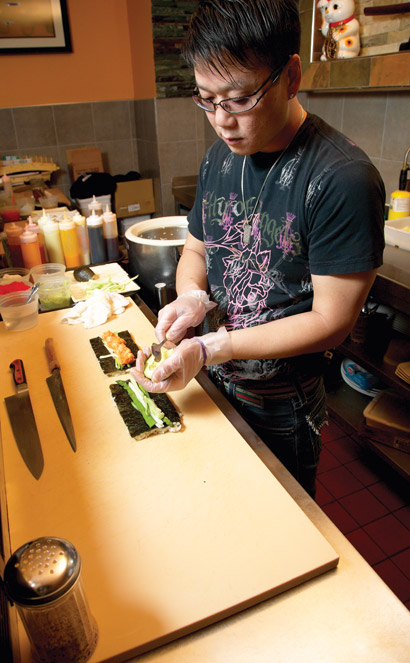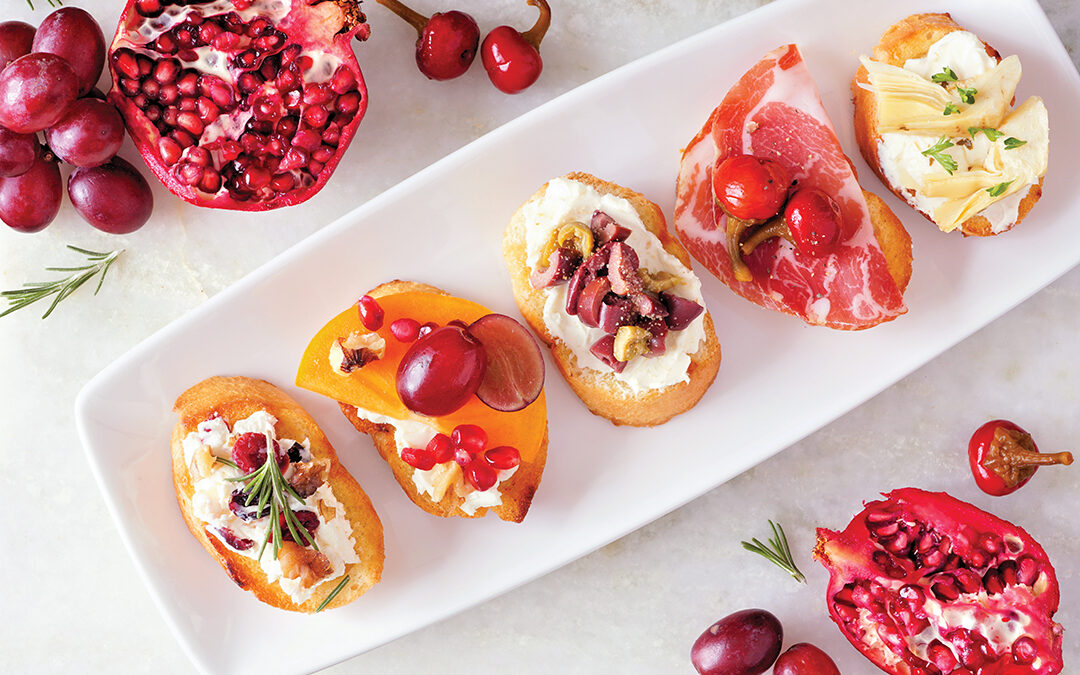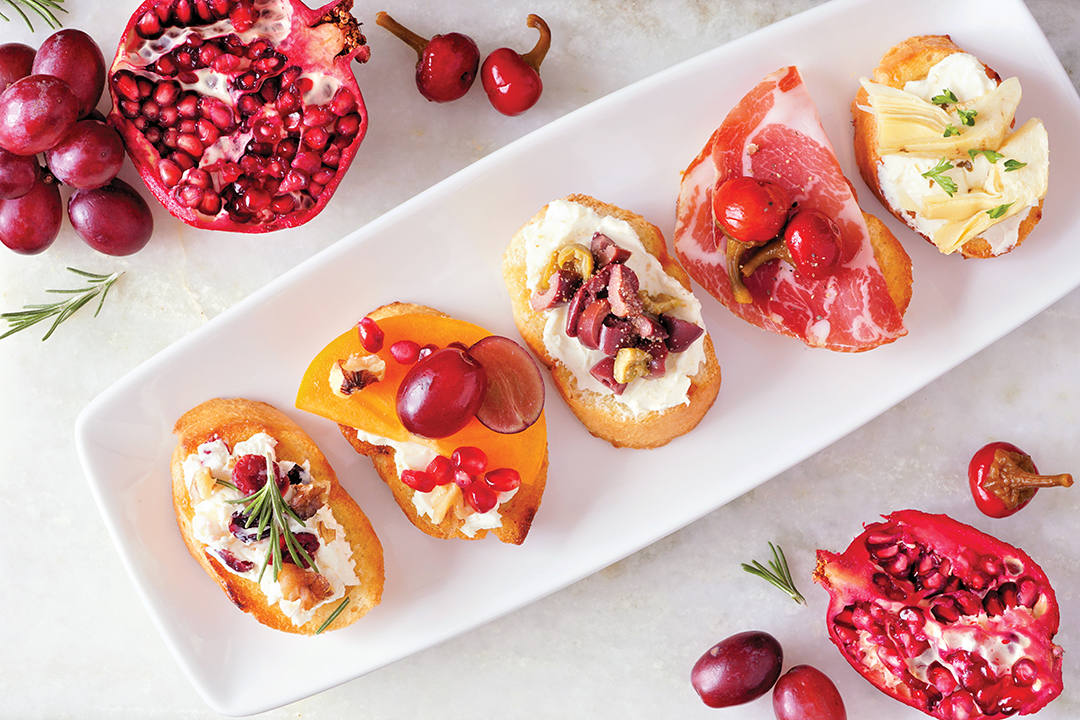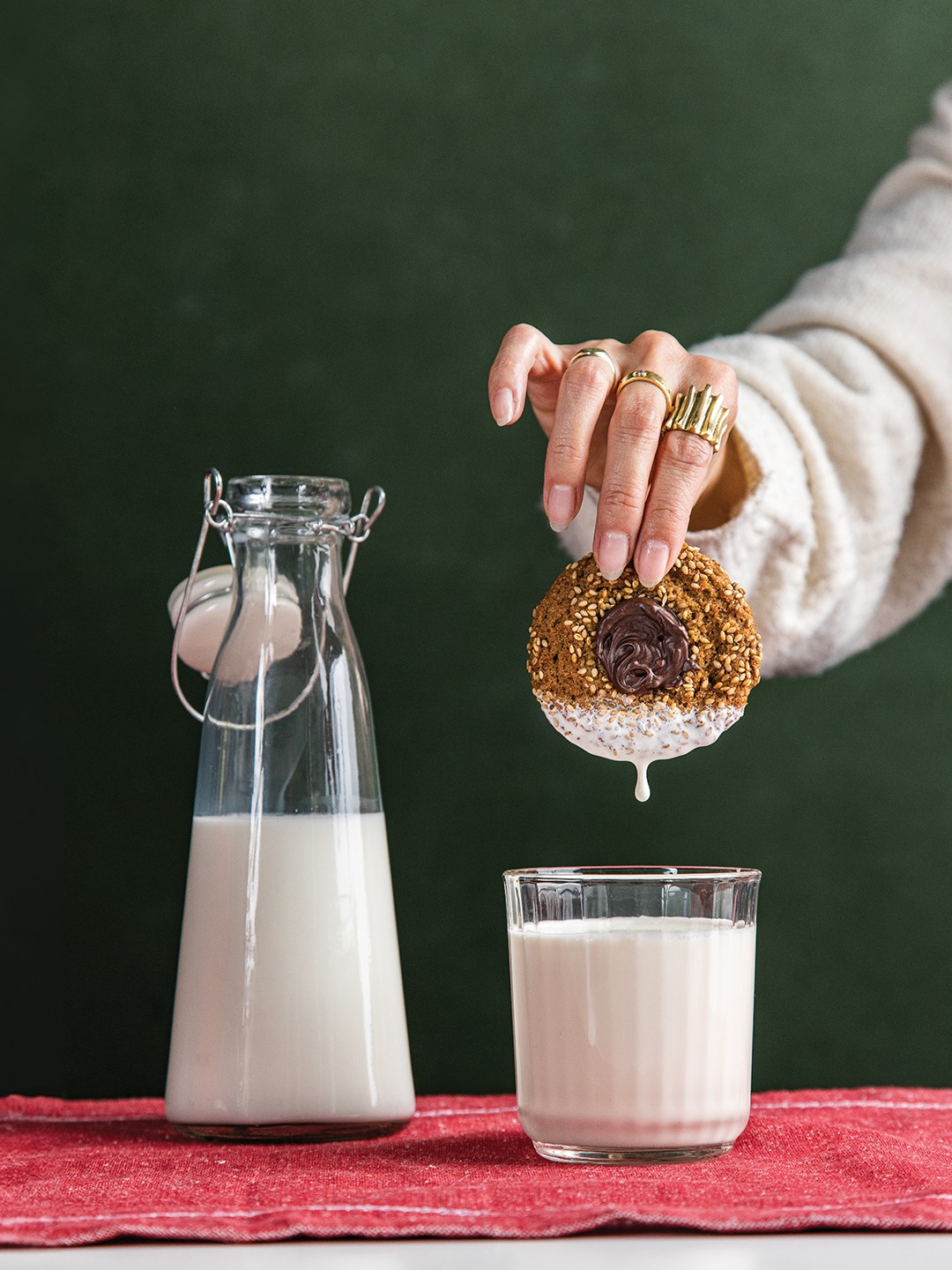
Enliven a winter’s evening with make-your-own sushi recipes from Sakana’s Johnny Kwon.
A sure-fire way to thwart the winter doldrums is to get busy in the kitchen. Yes, baking cookies is nice, but why not step outside the norm and make some sushi? It’s creatively engaging, perfect for crowds and easier than you’d think. We spoke with one of our top local sushi chefs for inspiration and instruction.
Meet the Chef: Johnny Kwon
Johnny Kwon is one cool looking dude. Dressed to chill in all black with spiked hair and uber-hip rectangular glasses, it’s hard to believe he works ‘round the clock as a partner and sushi chef at Sakana in downtown Wayzata.
Originally from South Korea, Kwon began his five-year journey to become a sushi chef in New York City. He spent a year and a half as an assistant at the high temple of Japanese cuisine, Nobu, dutifully performing the lowly tasks of cutting vegetables and making rice. He then moved to the Twin Cities and made his rounds through our best sushi establishments, including Origami, Yumi’s Sushi Bar, (now closed) Martini Blu, Saji Ya and Eden Prairie’s Osaka, where he was head chef. Along the way, Kwon found time to volunteer at his local church, introducing the delights of sushi to many first-timers. Kwon has been at the helm of Sakana since it opened in July 2009, and given his experience and dedication, it’s no surprise that business is booming.
Kwon is quick to tout the benefits of sushi and is generous with advice about making it at home. “Sushi is a stamina food,” he enthuses. “You get protein from the fish. Doctors in Japan say eat sushi, but it’s much more expensive there.” We Minnesotans are fortunate to be able to eat our sushi with relatively little cost and effort.
A caveat: Kwon discourages home cooks from using raw fish in their sushi. “We order ours from True World. They work with the health department to test our fish,” he says. “Otherwise, it’s not safe. There are parasites.”
Sushi Basics
The rice that you use in your sushi is of utmost importance, so don’t even consider Uncle Ben’s boil-in-the-bag. Kwon swears that rice quality is the key to good sushi. So get the good stuff and take the time to prepare it properly.
Rolled sushi—wrapped in nori (seaweed sheets) and sliced—is called maki. “Maki rolls have no rules,” insists Kwon, so you can get creative with your filling combinations. You can also try freeform hand rolls, or temaki, by wrapping a single sheet of nori into a cone shape around your fillings.
Serve the sushi with a dipping sauce made from a dab of sinus-clearing wasabi paste mixed into soy sauce. Add a heap of gari (pickled ginger) on the side. Go easy when dipping your maki; if you soak the rice, you’ll overwhelm the balance of delicate flavors. Sushi-friendly beverages include green tea, sake and beer.
Make It Yourself: Equipment, Tips and Sources
Rinse short-grain white rice in cold water and let it air-dry for 30 minutes to prevent mushiness. Kwon recommends an ordinary electric rice cooker. Once the rice is cooked, carefully sprinkle it with sushi vinegar: a mix of rice vinegar, lemon juice, sugar and salt. Fold the mixture in a bit at a time with a wooden spoon, being careful not to break or mash the grains. Taste it as you go for the right proportion of vinegar to rice. Use the rice immediately.
A bamboo sushi mat makes tight, uniform rolls. You can find one at cooking stores or order one online. Otherwise, use a tea towel or try your luck rolling free-form. Arrange your fillings, sushi rice and nori and work quickly. Filling possibilities include: smoked salmon, cooked shrimp, shiitake mushrooms, spinach, avocado, crabmeat, cucumber, salmon roe, and green onion. Use a few tablespoons of rice and 4–6 filling ingredients for each 7”x8” sheet of nori.
An easy entry into DIY sushi is the popular California maki: crab, avocado and cucumber. You might try making Kwon’s own “AAC” roll, with lightly steamed asparagus tips, avocado and finely diced cucumber. To make a spicy shrimp roll, Kwon suggests combining chopped cooked shrimp with spicy sauce (Sriracha, chili, hoisin, sesame oil and mayonnaise) and green onions. Popular garnishes include tobiko (flyingfish roe) or black sesame seeds.
Don’t forget the aesthetic component! Cut some radishes into flower shapes, add a judicious heap of shredded carrot or position an edible flower on the plate. Visual appeal is a vital factor in Japanese cuisine and heightens the dining experience. Take time to appreciate your edible palette before diving in.
Ingredients List
Shopping for sushi ingredients is as fun as making the sushi. Whether you order online or visit to an Asian market, enjoy the kaleidoscope of unusual edibles!
- Short-grain white sushi rice
- Kewpie brand Japanese mayonnaise
- Momoji Oshoro (carrot-pepper paste)
- Sriracha chili sauce, also known as “Rooster Sauce”
- Nori (seaweed sheets)
- Soy paper
- Rice vinegar
- Chili oil
- Hoisin sauce
- Tobiko (flying fish roe)
- Wasabi, either paste in a tube or powdered form
- Gari (pickled ginger)
- Honey






















